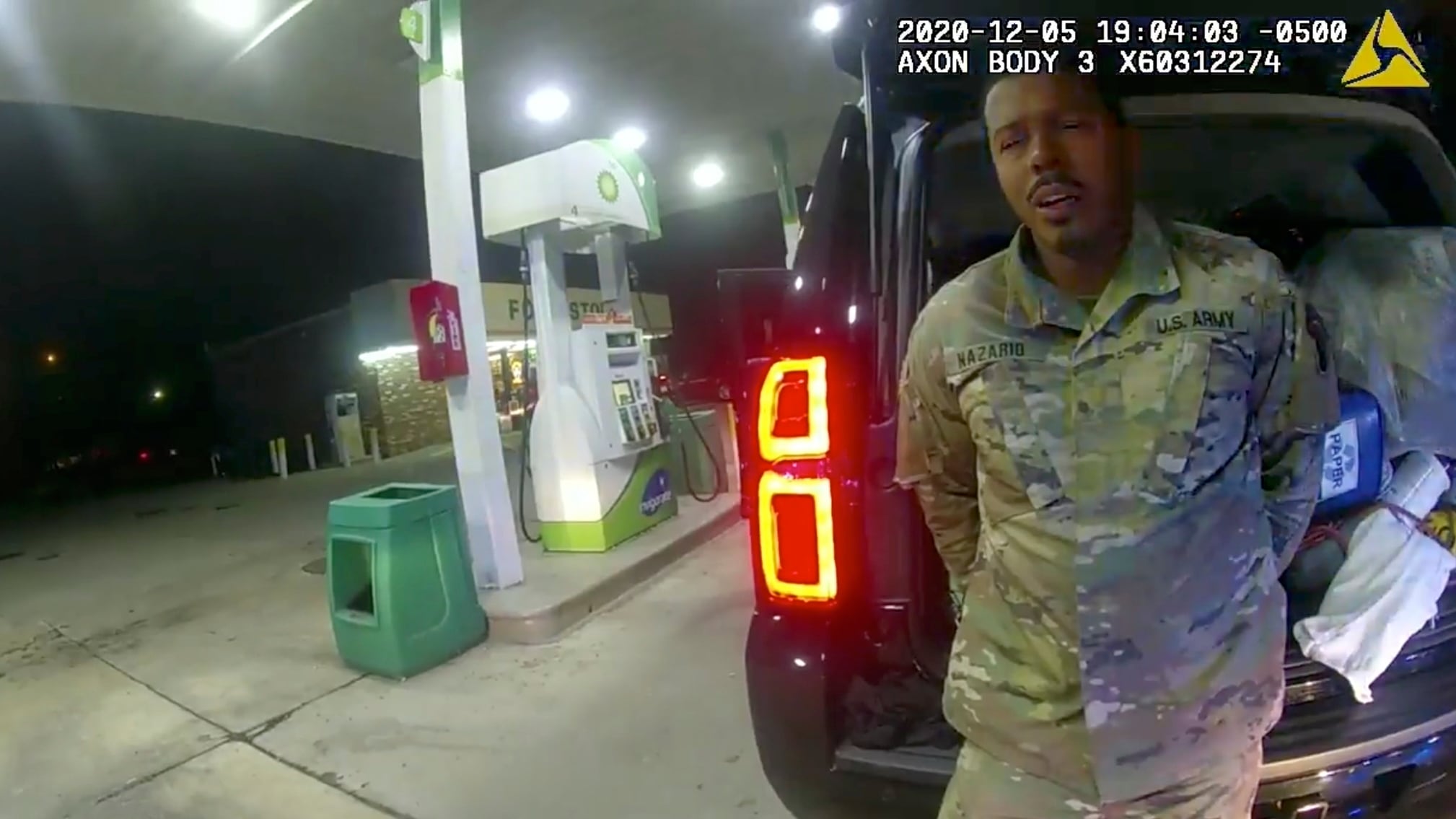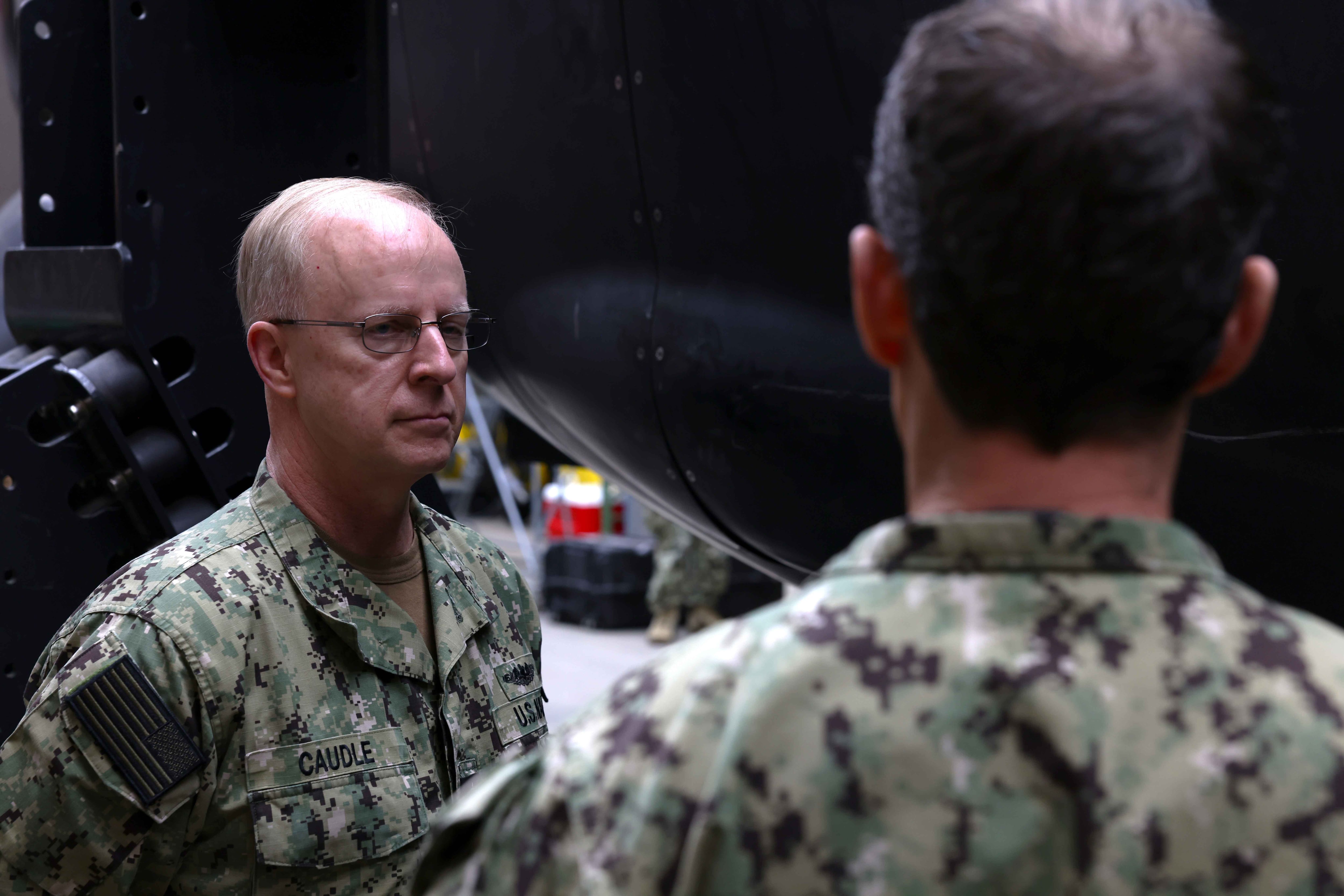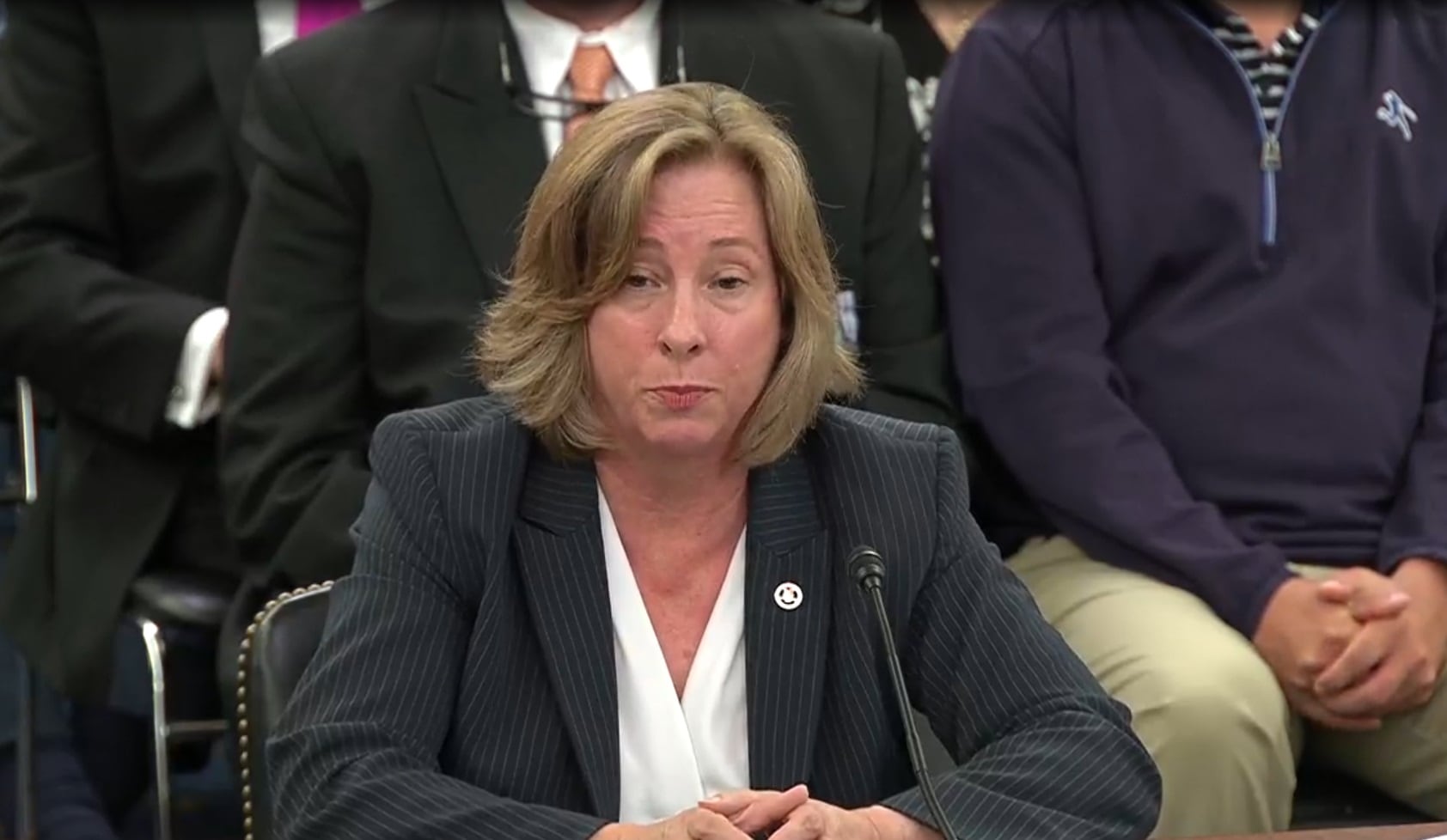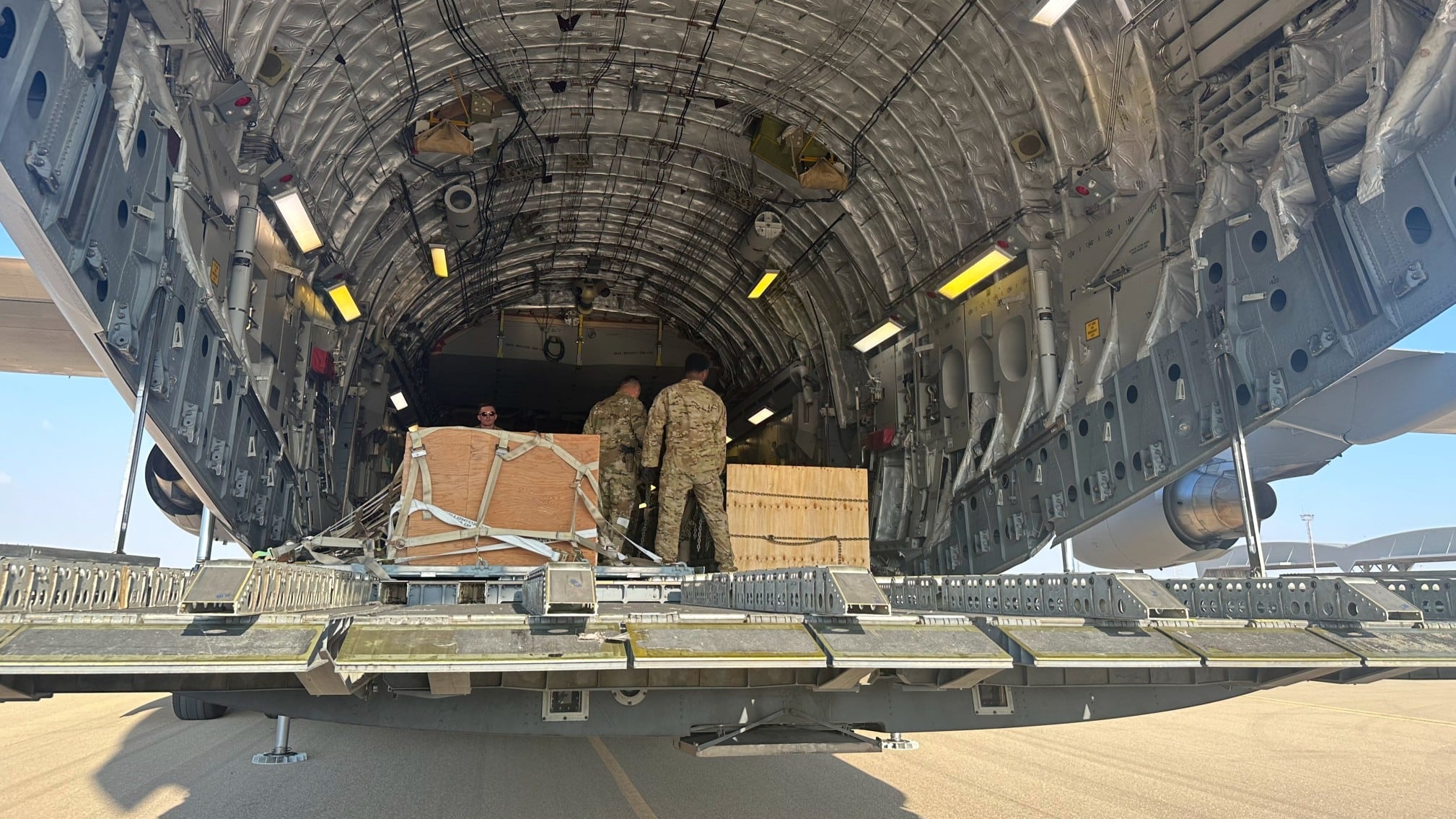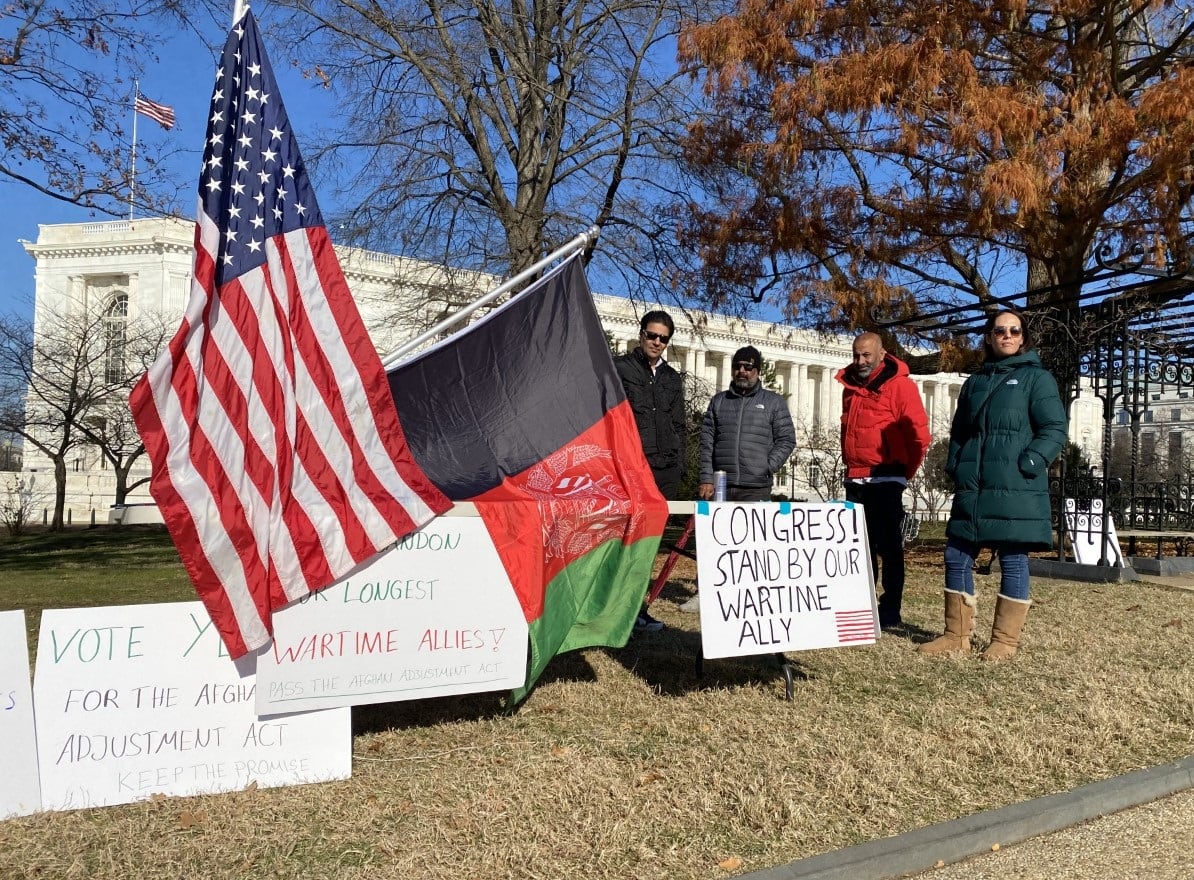NORFOLK, Va. — The police officers’ guns were trained on the uniformed U.S. Army lieutenant, his arms raised and palms outstretched as he sat in his SUV under a brightly lit gas station awning.
Lt. Caron Nazario had been pulled over in rural Virginia by the two officers, who repeatedly demanded that he step out of the vehicle. Nazario, who is Black and Latino, didn’t move and continually asked, “What’s going on?”
“I’m serving this country, and this is how I’m treated?” he said at one point.
“Yeah well, guess what? I’m a veteran, too,” police officer Joe Gutierrez responded. “And I know how to obey.” Nazario said he was afraid to get out, to which Gutierrez replied: “You should be.”
Within minutes, Nazario was pepper-sprayed, struck in the knees to force him to the ground and handcuffed. No charges were ever filed.
Videos of the December incident taken by the officers’ body cameras and Nazario’s cellphone became public last week, sparking outrage and accumulating millions of views. Nazario has sued the two officers, alleging his constitutional rights were violated during the traffic stop in the small Virginia town of Windsor. Officer Gutierrez has also been fired.
RELATED
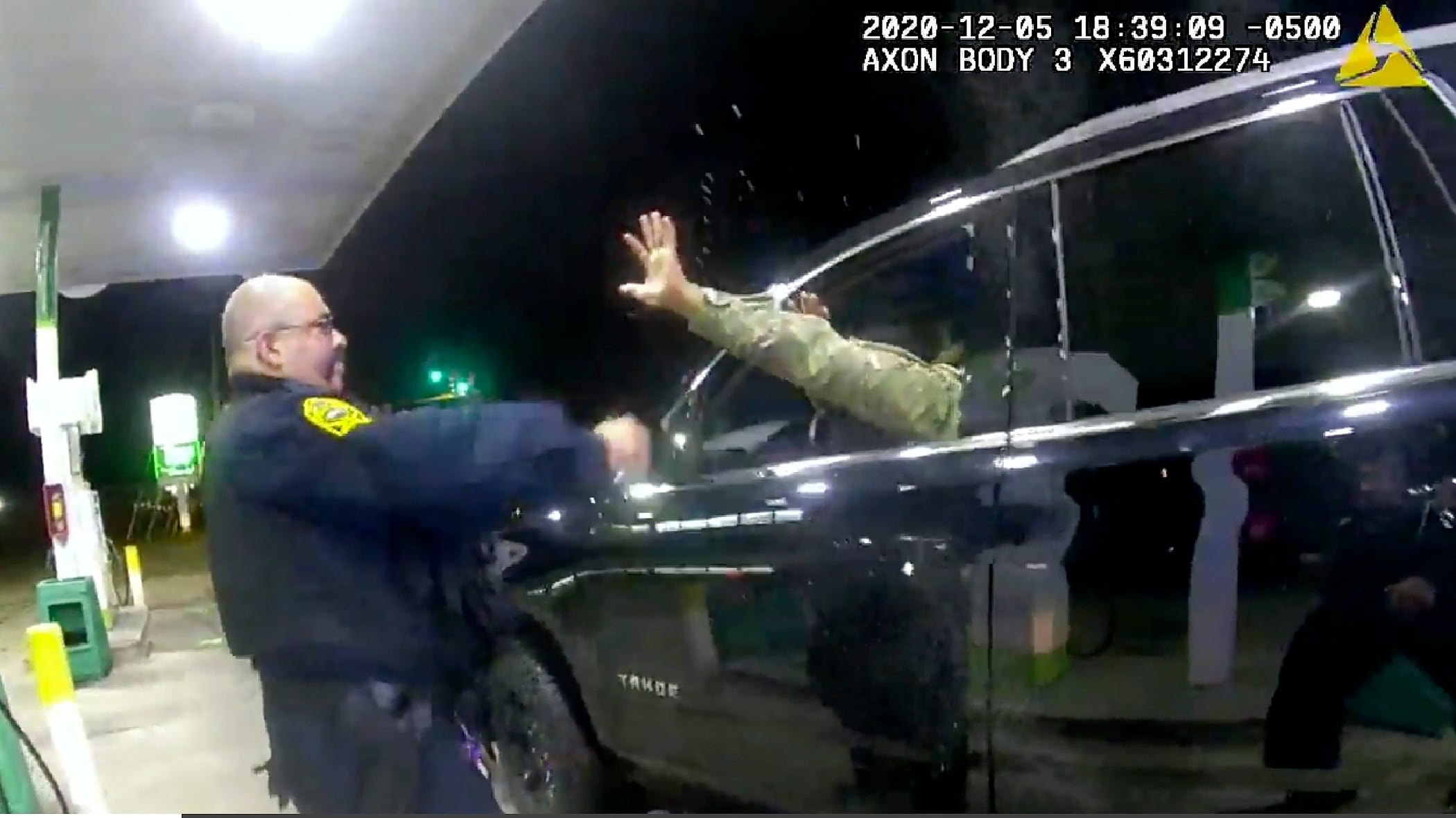
The episode was a grim reminder to many Black Americans that even being in military uniform doesn’t necessarily protect them from mistreatment by police. Further, there’s a long history of violence against veterans and service members of color, whose military status was seen by some as a provocation.
“I don’t think the uniform provokes in the same way that it once did, but it absolutely doesn’t shield,” said Bryan Stevenson, executive director of the Alabama-based Equal Justice Initiative. “And there will be people who will be provoked by Black achievement. … It can create a kind of a desire to humiliate and demand obedience.”
Thousands of Black men who served in the Civil War, World War I, and World War II were targeted because of their service and threatened, assaulted or lynched, according to a 2017 Equal Justice Initiative report.
One was Sgt. Isaac Woodard, a uniformed World War II veteran who was headed home on a bus in 1946. He was removed and beaten by a white South Carolina police chief, leaving Woodard permanently blind.
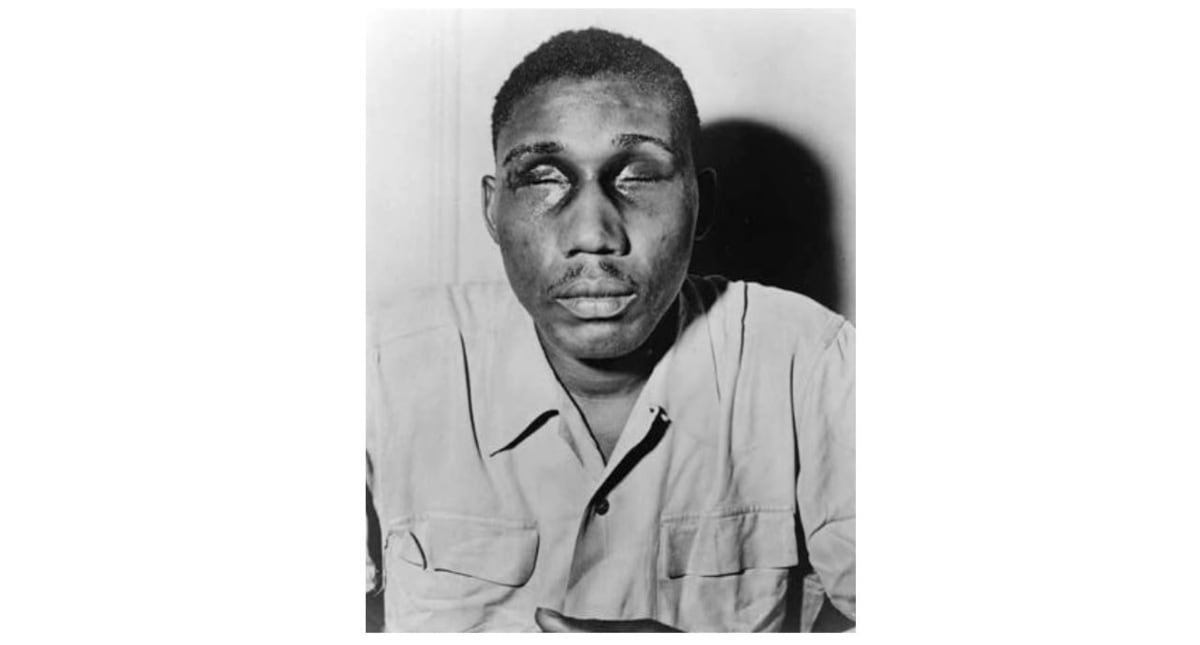
In 1962, Cpl. Roman Ducksworth was killed by police while riding a bus from Maryland to his home in Mississippi. The bus driver called a white police officer to awaken Ducksworth, who had fallen asleep, according to Jerry Mitchell, founder of the Mississippi Center for Investigative Reporting. The two struggled, and the officer shot and killed Ducksworth.
“His skin color trumped his status as a military officer,” Mitchell said. “It goes throughout history.”
Rossano Gerald, a Black Army sergeant who sued the Oklahoma Highway Patrol after he was pulled over with his young son and subjected to a protracted search in 1998, said Nazario’s traffic stop shows that nothing has changed.
“We have to keep reminding people that this is not gone,” said Gerald, who won a a $75,000 legal settlement three years after the incident. “We’ve got to fight for our rights.”
In his own case, Gerald said he believes his active-duty military status only fueled the trooper’s desire to show his power.
“From my perspective, he wanted to prove a point that he was in control,” Gerald, a decorated veteran, said in an interview.

Gerald, who was not wearing his uniform, handed over his military ID along with his driver’s license and told the trooper to call his commanding officer, per military protocol.
Instead, Gerald and his son were placed in a hot patrol car while troopers repeatedly searched his car. At one point, a trooper asked the 12-year-old if he had any weapons and conducted a pat search of the child, the lawsuit claimed.
The search turned up no evidence of drugs, and Gerald was given a warning ticket for failure to signal a lane change.
Since the videos of Nazario’s traffic stop became public, Virginia Gov. Ralph Northam has called for an investigation by state police. And state Attorney General Mark Herring has requested the two officers’ personnel records and use-of-force records from the department, among other documents.
“Even if Nazario drapes his body in the highest symbolic capital, that being United States military attire, it doesn’t gain him anything,” said K. Nyerere Turè, an assistant professor of criminal justice at Quinnipiac University.
Turè, a former police officer, said he was once pulled over by police in Georgia while wearing his full uniform in his personal vehicle. He got cited for driving 5 mph over the speed limit.
“And I understood this is not about policing,” Turè said. “Race itself in America trumps our professional titles, our honorifics.”
RELATED

Richard Brookshire, co-founder and executive director of the Black Veterans Project, said it’s important to remember that racism exists not only in the civilian world but also the military.
In February, Lloyd Austin, the nation’s first Black defense secretary, ordered military leaders to talk to troops about extremism in the ranks, after a number of former and current military members took part in the Jan. 6 U.S. Capitol riot. And last year, the Air Force released a report concluding the branch’s Black members are far more likely to be investigated, arrested, face disciplinary actions and be discharged for misconduct.
“The same kind of racial bias in policing that shows up in our communities exists within the military,” Brookshire said. “That is just as important a conversation as whether they’re harassed by a civilian cop when they leave the base.”
